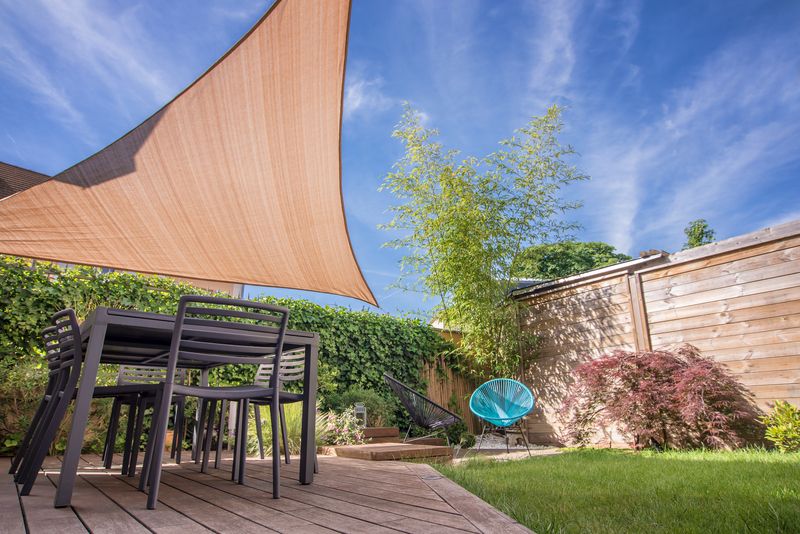Harmony and Balance: Essential Elements for Zen Spaces
Posted on 15/06/2025
Harmony and Balance: Essential Elements for Zen Spaces
Creating a Zen space is about much more than mere aesthetics--it's a philosophy that brings harmony, peace, and well-being into our daily environments. From minimalist homes to tranquil gardens, the pillars of balance and harmony are fundamental ingredients for crafting serene spaces that nurture the mind and soul. In this comprehensive guide, we'll explore how the delicate interplay of these elements creates Zen-inspired settings and learn practical ways to introduce tranquility into your own environment.

Understanding the Philosophy: The Core of Zen Spaces
The concept of Zen originates from ancient Buddhist teachings, centering on mindfulness, simplicity, and the appreciation of natural beauty. Zen spaces are a reflection of these values--deliberately curated to inspire a calm mind and peaceful existence.
- Harmony: Represents a seamless blend of design, nature, and purpose.
- Balance: Achieved through symmetry, proportion, and the thoughtful arrangement of space and elements.
- Minimalism: Focuses on stripping away excess to reveal the space's essence.
Zen-inspired spaces are not just about appearance; they shape our emotional and mental states by creating environments where stress is minimized and mindfulness is cultivated.
The Role of Harmony in Zen-Inspired Spaces
Harmony is the cornerstone of any Zen space. Through harmonious design, the different facets of a room--light, color, texture, and sound--come together in perfect synchronicity. This unity fosters a sense of belonging, relaxation, and purposeful tranquility.
- Color palette: Neutral colors such as whites, beiges, and soft greys cultivate an atmosphere of calmness.
- Lighting: Soft, natural lighting is preferred for a soothing ambiance.
- Natural materials: Wood, stone, bamboo, and linen form the basis of harmonious design, echoing nature's serenity and resilience.
When you enter a truly harmonious Zen-inspired environment, you immediately feel grounded and restored, as if the world's chaos has faded away. Achieving this requires mindful attention to the interconnectedness of every design decision.
Balance: The Key to Tranquility in Zen Spaces
Balance in a Zen space is all about proportionality, where every component, object, and layout choice works together to create symmetry--visually, emotionally, and energetically. This does not always mean perfect symmetry: rather, it is about ensuring there's an equilibrium between elements so that no single aspect overpowers the rest.
- Balanced furniture arrangement ensures easy movement and evokes openness.
- Symmetrical use of decorative objects, plants, and lighting fosters visual stability.
- The interplay of positive space (occupied) and negative space (unoccupied) prevents clutter and enhances tranquility.
By striving for balance in your design, you send a powerful subconscious message: all aspects of life deserve thoughtful attention and respect.
Essential Elements That Bring Balance and Harmony to Zen-Inspired Environments
A Zen-inspired space thoughtfully integrates various elements that together create an atmosphere of sanctuary and balance. Here are the essential components to consider:
1. Neutral and Natural Color Palette
The foundation of most Zen interiors is an understated color scheme. Neutral tones such as soft whites, beiges, mossy greens, and gentle greys create a unifying and calming backdrop.
- Use color to set intention--cool tones for tranquility, warm neutrals for comfort.
- Incorporate natural hues inspired by stones, forests, and water.
- Limit the use of bold or bright colors to subtle accents.
2. Natural Materials for a Grounded Feel
Bamboo, wood, stone, and linen are staples in Zen-inspired spaces. They infuse any environment with authenticity and a soothing tactile quality, promoting an organic, earthy vibe.
- Select furniture made from sustainable woods for an eco-friendly touch.
- Opt for linen or cotton textiles, which offer breathability and comfort.
- Incorporate stone or pebble accents in pathways, planters, or water features.
These choices root the space in nature, reinforcing harmony and balance.
3. Minimalist Design and Simplicity
Emphasizing simplicity is central to the Zen philosophy. The fewer distractions present, the more serene and focused the atmosphere becomes.
- Declutter regularly to maintain openness.
- Choose multi-functional furniture to maximize utility and minimize visual noise.
- Display only a few, meaningful objects that inspire peace or joy.
Remember: In a Zen-inspired design, "less is more." Every object should contribute to the overall sense of tranquility.
4. Connection with Nature: Bringing the Outdoors In
Biophilic design and incorporating natural elements are essential for harmony in Zen-inspired spaces.
- Integrate indoor plants such as bonsai, ferns, or bamboo for a touch of greenery.
- Utilize water features--small fountains or koi ponds--to evoke peaceful sounds and motion.
- Maximize natural light with sheer curtains and strategic window placement.
Nature's presence uplifts the spirit and grounds us in the present moment, cultivating mindfulness and balance.
5. Thoughtful Lighting
Lighting can transform the energy of a room. In a Zen-inspired space, the emphasis is on soft, ambient illumination.
- Use dimmable LED lights to adjust the atmosphere from day to night.
- Incorporate lanterns, candles, or shoji lamps for gentle, diffused glows.
- Place lights strategically to highlight textures, art, or nature-inspired features.
Balanced lighting helps set the mood for meditation, reflection, or unwinding after a long day.
6. Clean Lines and Simple Forms
Sharp angles and excessive ornamentation can create visual chaos. Instead, focus on:
- Clean, straight lines in furniture and architecture.
- Round, organic shapes to soften the environment.
- Open, uncluttered surfaces to allow the mind to relax.
These choices nurture the sense of order and tranquility central to Zen-inspired design.
7. Balance Between Function and Form
Every object in a Zen space serves a purpose, whether it's functional, aesthetic, or symbolic. The delicate balance between function and form ensures the space feels both usable and calming.
- Choose practical decor that doubles as art.
- Avoid excessive ornamentation--each item should enhance well-being.
- Let empty, negative space speak just as much as decorated space.
Feng Shui and the Flow of Energy in Zen-Inspired Spaces
Often, Zen spaces incorporate elements of Feng Shui, the ancient Chinese art of arranging the environment to optimize energy flow. The positioning of furniture, accessories, and natural elements can maximize harmony and balance within your home or office.
- Clear pathways: Allow for easy movement and flow between zones.
- Balanced elements: Evenly distribute representations of earth, water, wood, fire, and metal.
- Mindful orientation: Consider the direction of light, doorways, and major furniture pieces.
Applying Feng Shui principles enhances the harmonious energy of any Zen-inspired interior, leading to improved comfort and mental clarity.
How to Create Harmony and Balance in Your Own Zen Space
Ready to embark on your own journey toward creating a harmonious, balanced environment? Here's a practical, step-by-step approach to building your Zen-inspired space at home or at work:
Step 1: Declutter and Simplify
- Remove unnecessary items from all surfaces.
- Assess each piece of decor for meaning and necessity.
- Maintain only what brings you joy, peace, or serves a useful function.
Step 2: Choose a Calming Color Scheme
- Select neutrals, earth tones, and muted colors as your base.
- Add subtle accent colors through plants, ceramics, or textiles for visual interest.
Step 3: Incorporate Nature and Organic Materials
- Bring in live plants or fresh flowers to invigorate the room.
- Choose wood or stone accents for warmth and grounding energy.
Step 4: Arrange Furniture Mindfully
- Ensure easy flow through the room, free from blocked pathways.
- Maintain a balanced arrangement--avoid overcrowding or under-furnishing.
Step 5: Prioritize Comfortable, Multi-Purpose Pieces
- Choose furniture that adjusts to your lifestyle, supporting relaxation and productivity alike.
- Look for hidden storage to keep clutter out of sight.
Step 6: Add Soft, Layered Lighting
- Use lamps, pendant lights, and candles to create child layers of illumination.
- Highlight natural features, artwork, or architectural details.
Step 7: Create a Dedicated Mindfulness Zone
- Set up a small area for meditation, reading, or rest--furnished with a floor cushion, low table, or cozy chair.
- Keep this space free of distractions, technology, and clutter.
Step 8: Engage the Senses
- Add soft textures with rugs or throws.
- Incorporate subtle scent through essential oil diffusers or natural incense.
- Include soothing sounds--like water features, wind chimes, or gentle music.
Common Mistakes to Avoid When Designing a Zen Space
Even the best intentions can sometimes lead to errors that disrupt the harmony and balance of a Zen-inspired environment. Watch out for these common pitfalls:
- Overcrowding with decor: Too many objects break the flow and introduce anxiety.
- Neglecting negative space: Empty spots are just as important as filled ones; avoid stacking or filling every corner.
- Ignoring lighting: Harsh or insufficient lighting disrupts mood. Opt for soft, layered illumination.
- Choosing synthetic over natural: Artificial materials can feel impersonal and cold; always opt for natural when possible.

Benefits of a Harmonious, Balanced Zen Space
When you successfully introduce harmony and balance in your Zen-inspired space, the advantages resonate through every aspect of your life:
- Reduced stress and anxiety
- Greater focus, clarity, and creativity
- A sense of shelter and belonging
- Improved sleep and relaxation
- Enhanced connection to nature
- Support for mindfulness and meditation practices
_Countless studies have shown that our environments shape our moods and behaviors. By cultivating a Zen space that embodies balance and harmony, you create a sanctuary where your best self can flourish._
Conclusion: Embracing Harmony and Balance in Your Everyday Space
The timeless wisdom of Zen-inspired design offers a gentle reminder to live in harmony with our surroundings. By infusing your home, office, or garden with balance and mindful intent, you invite a sense of tranquility that supports well-being, productivity, and joy. Every color scheme, object, and arrangement works together to cultivate a refuge--a place of peace and inspiration in a fast-paced world.
Begin today, one thoughtful adjustment at a time, and experience how harmony and balance transform not only your environment but your entire way of living.



